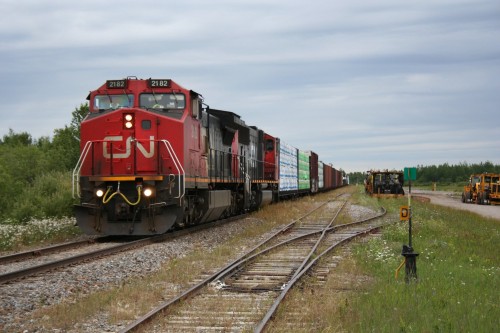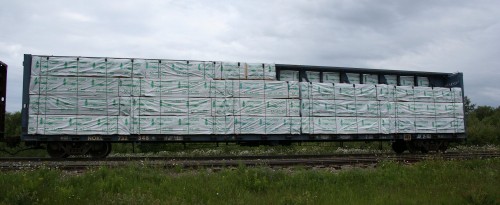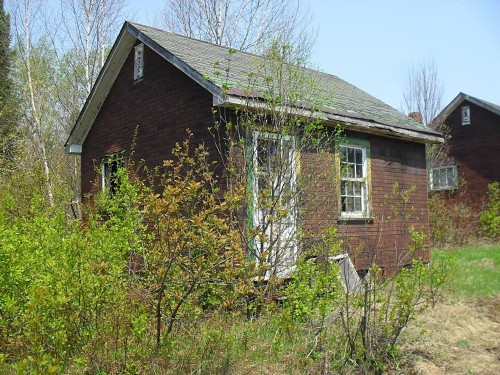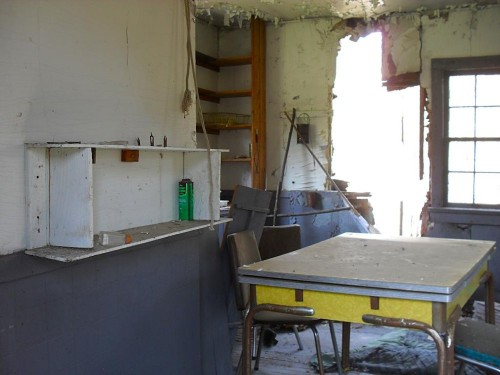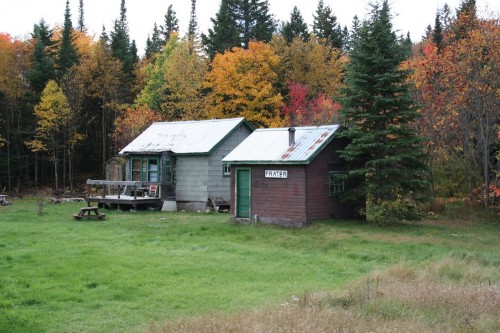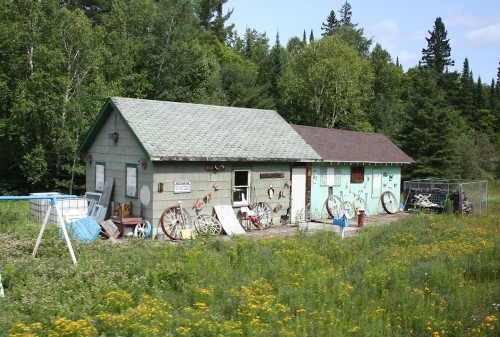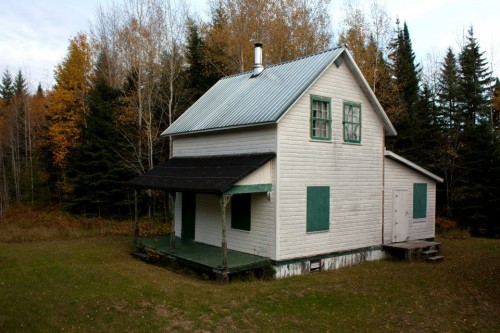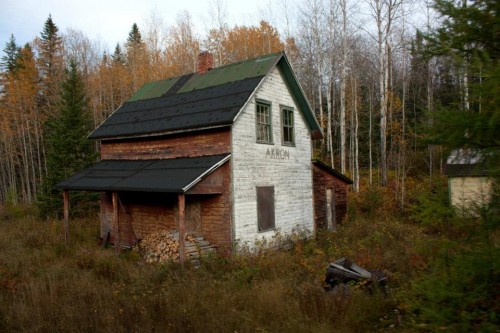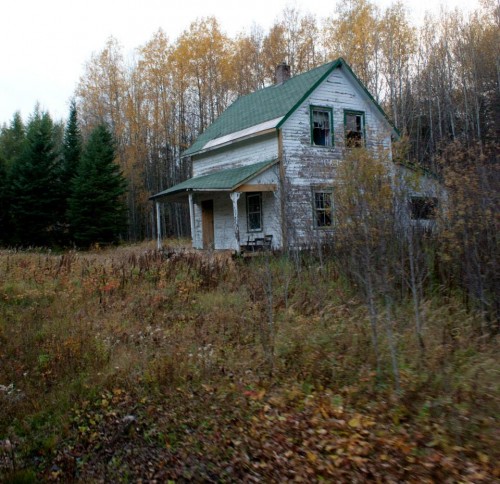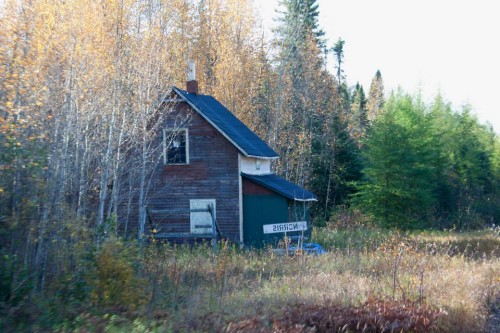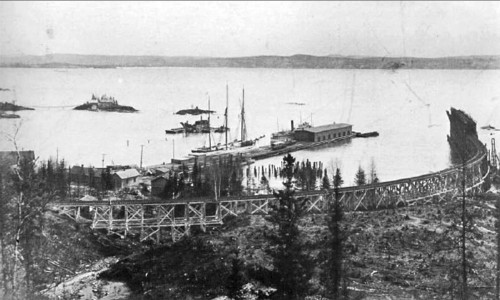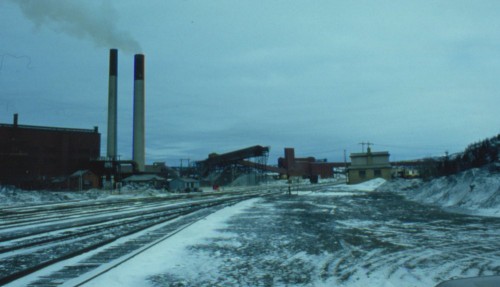Continued from Part 1. (See notes in Part 1 on major consolidations and mergers.)
A pair of local family-owned companies, Normick-Perron, owned by the Perron brothers of La Sarre before being sold to Noranda Forest (later Nexfor) in 1989, and Forex, owned by the Cossette family of Val d’Or, figure pretty heavily on the scene in the Abitibi region during the 1980s, with pretty big expansions during the 1970s with consolidations and acquisitions of many other local family-owned businesses.
La Sarre, QC
Normick-Perron (OSB/panelboard) – This Normick-Perron mill was built in the mid 1950s by H. Perron et Fils and the only Nexfor property in the region not sold off in the early 2000s and operates today as Norboard, Inc. (since 2004), a major supplier of oriented strandboard products.
Normick-Perron (lumber) – In 1970 H. Perron et Fils merged with JH Normick of La Sarre to form Normick-Perron. During the early 1970s the Perron family concentrated their sawmill operations in the nearby area in La Sarre. The lumber mill was sold by Nexfor to Tembec in 2003 and as far as I can tell is also still operating.
Taschereau, QC
Taschereau Lumber(?) (lumber) – Couldn’t find a lot of detailed information on this one but it was acquired by Tembec in 1987 and operated by that company until permanently shuttered in 2009. I did at one point randomly come across a e-bay slide of a CN flatcar loaded with un-wrapped lumber with a “Taschereau” stamp, so likely this was an independently operating mill as Taschereau Lumber or Forest Products (or the French version thereof).
Amos, QC
Materiaux Blanchet (lumber) – Materiaux Blanchet purchased the Amos sawmill in 1982 from Theo Ayotte and continues to maintain a significant operation here today.
Normick-Perron (lumber) – Normick-Perron acquired a sawmill in Amos from J.E. Thierrien in 1972. I haven’t been able to track the history of this one, but in addition to the large active Materiaux Blanchet mill today, there appears to be a pair of clearly abandoned sawmills visible in the Google satellite imagery of this town but I’m not sure when or under what name the mills were operating when closed.
Normick-Donohue (newsprint) – Established in 1979 as a joint partnership between Normick-Perron (later Noranda Forest Products/Nexfor) and Donohue, Inc. under the name Normick-Donohue to produce newsprint, in 1995 Nexfor sold off their stake to Donohue. In 2000, Donohue, Inc. was acquired by Abitibi-Consolidated (currently Resolute Forest Products) and this mill is still in operation today.
Landrienne, QC
Scierie Landrienne (lumber) – This independent mill was established in 1979 and continues to operate under the same name today although the company was purchased by Chantier Chibougamau in 2015 – another local company based in Chibougamau, QC.
Barraute, QC
Maibec/Optibois? (lumber) – Not entirely sure of the history of this mill, but it looks like it was sold to Materiaux Blanchet in 1988. It doesn’t appear to be listed on Materiaux Blanchet’s web site as a current operation, and some Googling isn’t turning up much useful, and it looks like it’s been shut down and abandoned.
Senneterre, QC
Normick-Perron (lumber) – In 1976 Normick-Perron purchased a sawmill in Senneterre from Paradis & Fils. This mill was sold to Tembec by Nexfor in 2003. In late 2016, Tembec announced the sale of this mill to Resolute Forest Products.
Saucier? (lumber) – another locally owned sawmill in Senneterre was sold to Donohue, Inc. in 1988. In 2000, Donohue was acquired by Abitibi-Consolidated (later Abitibi-Bowater, then Resolute Forest Products) and this mill is still in operation today.
Matagami, QC
Bisson & Bisson (lumber) – Bisson & Bisson first established a sawmill in Matagami in 1968 and relocated to the current location in 1974 after a fire. The mill was acquired by Domtar in 1988, and subsquently by EACOM in 2010. The mill is still in operation today, although CN has indicated an intention to abandon the branch line serving this mill so it may soon lose rail service.
Quevillon, QC
Domtar (pulp/paper) – the paper mill at Quevillon (and the neighbouring community of Lebel-sur-Quevillon) was established by the Domnion Tar & Chemical Co. (Domtar) in 1966. The mill produced softwood kraft pulp and paper, and in 1974 Domtar built a sawmill connected to this facility. The Domtar mill at Quevillon operated into the early 2000s but was closed permanently in 2008. In 2012 the non-operating mill was sold to Fortress Paper with the intention of converting the mill to produce high-cellulose “dissolving pulp”, however a change in market conditions (high import tariffs implemented by China) scuttled this. In 2016 the mill property and assets were sold to Nexolia Bioenergy.
Val d’Or, QC
Forex (lumber) – Not sure of early history, but it was owned by Forex in the 1980s and sold to Domtar in 1985. Currently in operation as EACOM’s Val d’Or mill. Side note: this mill appears to be the current destination of a large move of pulpwood traffic off the former ACR.
Forex (lumber) – A second lumber mill in Val d’Or, this mill was acquired from the Sullivan family in 1980 and sold to Domtar in 1985. Currently in operation as EACOM’s Sullivan mill.
Forex (OSB/Particleboard) -If I understand what I’ve read correctly (on a French site using Google Translate), this mill was started by Forex in 1975 and operated under the name Forpan during the early 1980s. Sold to Uniboard in 1987 and still doing business today under that name.
Malartic, QC
Forex (lumber) – Another Forex mill in the Val d’Or area sold to Domtar in 1985. Not too sure of history before that. Domtar closed the mill in 1997.


